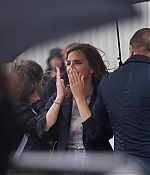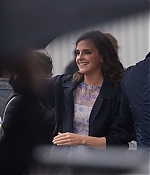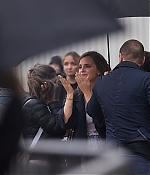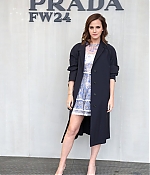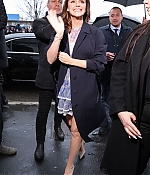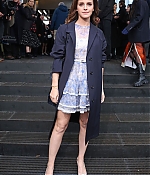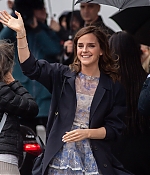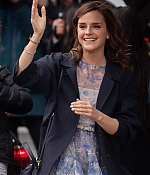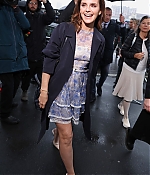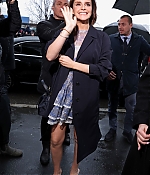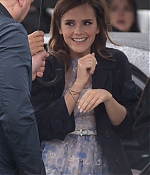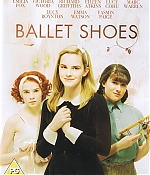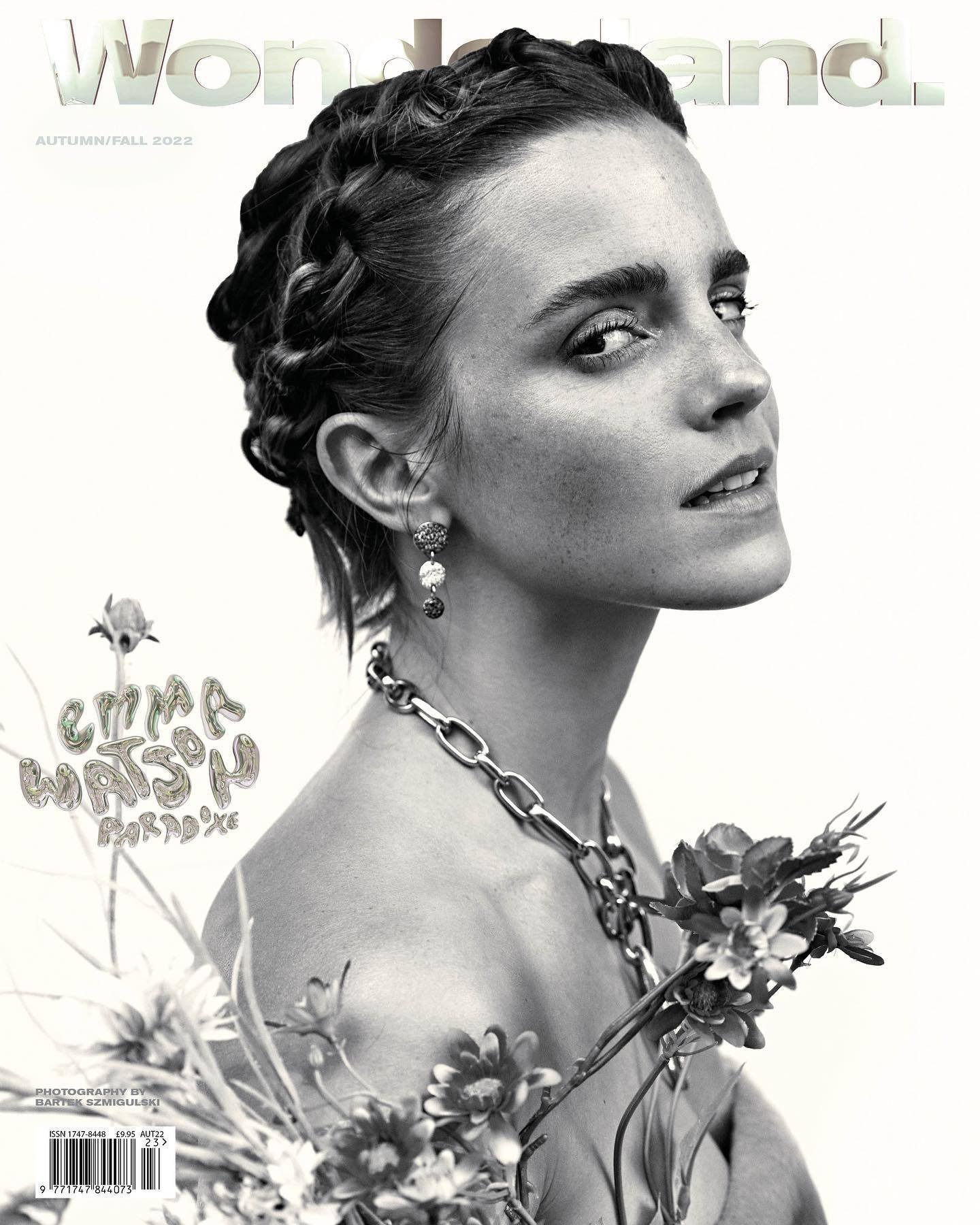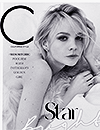The first promotional stills from Greta Gerwig’s adaptation of Little Women have been released by Vanity Fair! Our gallery has been updated with the images, and you can read the article below.
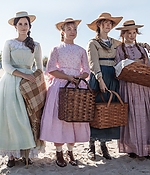


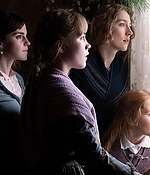
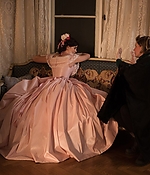
Greta Gerwig doesn’t remember reading Little Women for the first time. “It must have been read to me,” she says when I ask for her earliest memories of author Louisa May Alcott’s classic tale of four girls imagining a world beyond their humble surroundings outside Civil War–era Boston.“I always knew who Jo March was,” Gerwig continues. “She was the person I wanted to be.”
In that, Gerwig has had plenty of company. Little Women is one of the most popular books in the history of American letters; after the first volume sold out its initial run of 2,000 copies in 1868, the novel has never been out of print. Simone de Beauvoir, born in 1908, pretended as a child that she was Jo—Alcott’s protagonist and stand-in, a determined, stubborn tomboy with a flair for writing. Ursula Le Guin says that Alcott’s Jo made writing as a girl feel possible. In film, Katharine Hepburn played Jo in 1933; Winona Ryder, in 1994. Now, Gerwig has created her own Jo for the screen in Saoirse Ronan, who also starred in Gerwig’s debut as a solo director, 2017’s Oscar-nominated Lady Bird.
Gerwig based that film on her own life, and Ronan’s character on herself. Still, Little Women might be even more personal to the director. (Her agent pointed this out to her, Gerwig tells me.) “This feels like autobiography,” Gerwig says. “When you live through a book, it almost becomes the landscape of your inner life. … It becomes part of you, in a profound way.”
Ronan’s introduction to Little Women was the Winona Ryder film, which came out in 1994, the year she was born. She grew up an only child, so for her, filming Little Women gave her a special opportunity: “I got to have sisters.” Florence Pugh, Emma Watson, and Eliza Scanlen play the sisters; Laura Dern is Marmee, and Meryl Streep plays their forbidding, rich Aunt March.
Gerwig shot on location in the book’s Massachusetts setting, where Alcott and her three sisters grew up. The director researched locations that the family could have inhabited, and in some cases, ones they really did—like the schoolhouse where Alcott’s firebrand father, Bronson, taught. “It gives gravity to what you’re doing,” Ronan says. “The physical place really reminds you of the story you’re trying to tell.” Gerwig also relied on paintings from the era, to give the film a vividness that the black-and-white and sepia portraits of the era couldn’t accomplish. An 1870 painting by Winslow Homer called High Tide created the texture for the beach scene; costume designer Jacqueline Durran modeled Jo’s look after a figure in the work.
“They were just people. They were not in a period piece, they were just living,” Gerwig says. “They were the most modern people who had ever existed, up till that point.”
Opposite Ronan, Timothée Chalamet (another Lady Bird carryover) plays heartthrob Laurie, the literal boy next door who develops an intense friendship with Jo. Ronan and Chalamet are close in real life, which added to their chemistry. Their characters’ friendship never becomes romantic, despite Laurie’s proposal—and the book’s fans’ copious letters to Alcott.
“I loved that in Lady Bird, he was the one that broke my heart, but I got to break his heart in Little Women,” says Ronan, laughing.
Alcott never married, prompting modern speculation about her sexuality. (In the book, Jo wears men’s clothes and laments her femininity, which adds to that speculation.) In Little Women, Jo’s friendship with Laurie is proving ground for a different kind of gendered relationship.
“Jo is a girl with a boy’s name, Laurie is a boy with a girl’s name,” Gerwig pointed out. “In some ways they are each other’s twins.” A subtle connection between the two in the film is their wardrobe; Durran had them swap articles of clothing throughout the story.
“They find each other before they’ve committed to a gender,” Gerwig adds. “It wouldn’t be wrong to call Saoirse handsome and Timothée beautiful. Both have a slightly androgynous quality that makes them perfect for these characters.” But when Laurie proposes, their innocent connection is lost.
“We didn’t want to label [Alcott] as anything,” Ronan says. But, she says, Gerwig wove details of Alcott’s writing from her letters and diaries into the script, including a line from Jo about loving freely and deeply. It suggests a yearning that the book Little Women doesn’t otherwise explore.
“We wanted to explore as much of Louisa’s real story as we could,” Ronan says. Gerwig discovered that the Alcotts were in much more dire financial straits than the “genteel poverty” of the March sisters. Alcott was out working at the age of 15, and growing up in Boston, the family moved something like 30 times. “Her life was a lot darker than what she allowed for in the book,” she added. That lens adds drama to the moments when the March sisters step into a world of luxury. In the chapter “Meg goes to Vanity Fair”—a reference to The Pilgrim’s Progress, not this magazine—the oldest March sister gets a brief taste of a rich lady’s life.
“Meg, like so many people, just has an irrepressible desire to fit in with the fancy girls that she’s so different from,” Gerwig says. The Alcotts were radical thinkers; Gerwig labels them as a kind of “intellectual hippie family.” They made their own clothes. When Meg has a chance to get away for a vacation, she has the opportunity to dress, and act, like the girls she’s always wanted to be. “Because she’s a great actor, I always saw it as a way of her acting the part of someone… who has all this around her,” Gerwig added.



